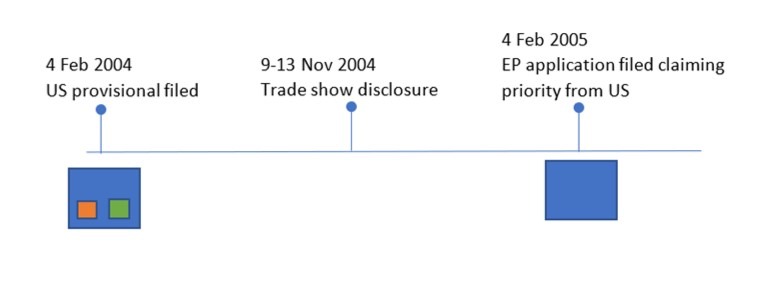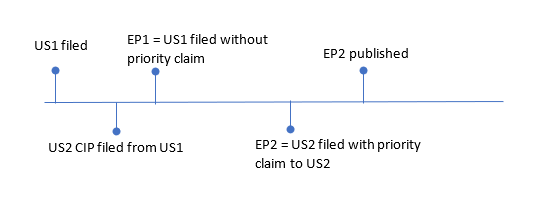In the last few months, the European Patent Office has decided that the priority claim of a number of pending patent applications and granted patents was invalid. In this article, Parminder Lally looks at the reasons behind these decisions and the consequences, and provides tips on how to avoid priority issues on your own patent applications.
Tips for avoiding priority problems
Generally speaking, to avoid priority claims being lost, you should:
- File a later priority-claiming application in the name of the entity who has the rights to file that application and make the priority claim. This may be the same entity as that on the priority application, or may be a new entity as a result of any transfer of rights (e.g. assignment). See point 1 below for an example of how this can go wrong.
- Request to correct any error in the applicant name as soon as you notice the error.
- Ensure, if possible, that any changes to the claims and description of a priority-claiming application relative to the priority application are within the scope of the priority application. This is true both when drafting the priority-claiming application and during prosecution. See point 2 below for an example of how this can go wrong.
- Ensure you are not claiming priority from a US continuation application – these cannot be used as the basis for a priority claim.
- Ensure, if you are claiming priority from a US continuation-in-part application, that you are only claiming priority with respect to the new material that is not in the earlier US application. See point 3 below for an example of how this can go wrong.
1. “Any person… or his successor in title”
Art. 87(1) of the European Patent Convention (EPC) states that priority from an earlier application can only be claimed if the later application (e.g. a European patent application) is filed by the same person, or his successor in title, as stated on the earlier application. For example, if the earlier application is filed by Company A, and the later European application is filed by Company A, then priority may be validly claimed. However, if the later European application is filed by Company B, then Company B needs to be able to demonstrate how the right to claim priority from Company A’s earlier application transferred to Company B. Furthermore, the transfer must have occurred before Company B filed their European patent application.
It is quite common for transfers from one company to another to occur. For example, Company A may sell their patent portfolio to Company B, or Company A (and its patent portfolio) may be acquired by Company B. Alternatively, Company A may change its name (e.g. as part of a rebranding exercise) to Company B.
In T0725/14, a granted European patent EP2105439 owned by Furanix Technologies B.V. was opposed. The timeline below illustrates the situation:

The Opponent to granted patent P3 argued that Avantium had actually transferred the priority right to Furanix on 1st March 2007, two weeks before P2 was filed. An assignment showing the transfer between the two companies and dated before the filing of P2 was submitted as evidence. Consequently, the EPO decided that P2 had not been filed in the name of the company having the legal rights to claim priority (i.e. Furanix). Consequently, P2 was not entitled to priority, and since P3 is a divisional of P2, P3 was also not entitled to priority.
The EPO ruled out the possibility of correcting the name of the applicant who filed P2 from Avantium to Furanix because, during the hearing, it had been argued that Avantium had not intended to transfer the right to claim priority to Furanix. Accordingly, the EPO could not find a mistake to be corrected.
The consequence of this loss of priority was that the publication of P1 was now prior art against P3 for the purpose of novelty. As a result, claim 1 of P3 was found by the EPO to lack novelty over P1 and the patent was revoked.
2. “The same invention”
Art. 87(1) EPC requires that the priority-claiming application is for the “same invention” as the priority application. The term “the same invention” means that the skilled person should be able to derive the subject matter of the claim of the priority-claiming European application directly and unambiguously, using common general knowledge, from the previous priority application as a whole. In other words, the specific combination of features in the claim must at least be implicitly disclosed in the previous application.
In T0336/16, the EPO considered European patent EP1711677 owned by Edgetech I.G. Inc.

The European patent claimed a method of applying a spacer to a glass sheet while forming an insulating glazing unit. The method comprised a number of steps A to E and stated that “the method is free of the step of manually handling the sealant-laden spacer body after step (C)”. The EPO found that the US provisional application did not explicitly indicate what happens after the sealant is applied at C, such that it was possible that the spacer might be manually loaded into another device (e.g. automated equipment). Furthermore, the EPO found that the only basis for such a feature (as indicated by the blue box in the diagram) was only disclosed in the earlier US application in combination with two other features (as indicated by the orange and green boxes). The two additional features were not included in the claimed invention of the European patent. The EPO considered these two features to be essential based on the disclosure of the US application and therefore, the skilled person would not be able to directly and unambiguously derive the claimed method from the content of the earlier US application.
As a result, the EPO found that the claimed invention was not the same invention as that of the US provisional application and therefore, the priority claim was invalid. Unfortunately, a public demonstration of a similar method took place at an industry trade show before the filing date of the European patent. As the priority claim of the European patent was considered invalid, the public demonstration became prior art for the purpose of novelty and inventive step against the European patent, and the EPO considered the claimed method to lack novelty. The EPO revoked the patent.
3. “During a period of twelve months from the date of filing of the first application”
The term “first application” in Art. 87(1) EPC means the application which discloses for the first time any or all of the subject matter of the European application. The filing date of the “first application” must be claimed as a priority. If it is found that the subject matter of the European application was disclosed in an even earlier application filed by the same applicant or his successor in title, the priority claim is invalid.
In T1662/14, the EPO maintained a decision to revoke European patent EP1610681 (EP2 in the diagram below). In this case:

All of the patent applications in the diagram above were filed by the same applicant or their successor in title. The content of EP2 was identical to, but did not claim priority from, US1. EP1 has a priority date before the filing date of EP2, but was published after EP2 was filed. Therefore, EP1 is prior art against EP2 for the purpose of novelty only if the priority date of EP1 was itself valid. However, there was subject matter common to US1 and US2. It was argued that US2 was therefore not the first filing for the common material. Accordingly, EP1 could not validly claim priority from US2 for any material that was also in US1.
It was found that US2 was the first application which disclosed a particular system and with respect to this system, the priority claim for EP1 was valid. As a result, EP1 could be used to determine the novelty of the patent in suit (EP2). Unfortunately, this meant that the claimed invention of EP2 was considered to lack novelty.
If you have any questions, or believe your patent portfolio may be affected by the issues described above, please contact us for confidential advice.








